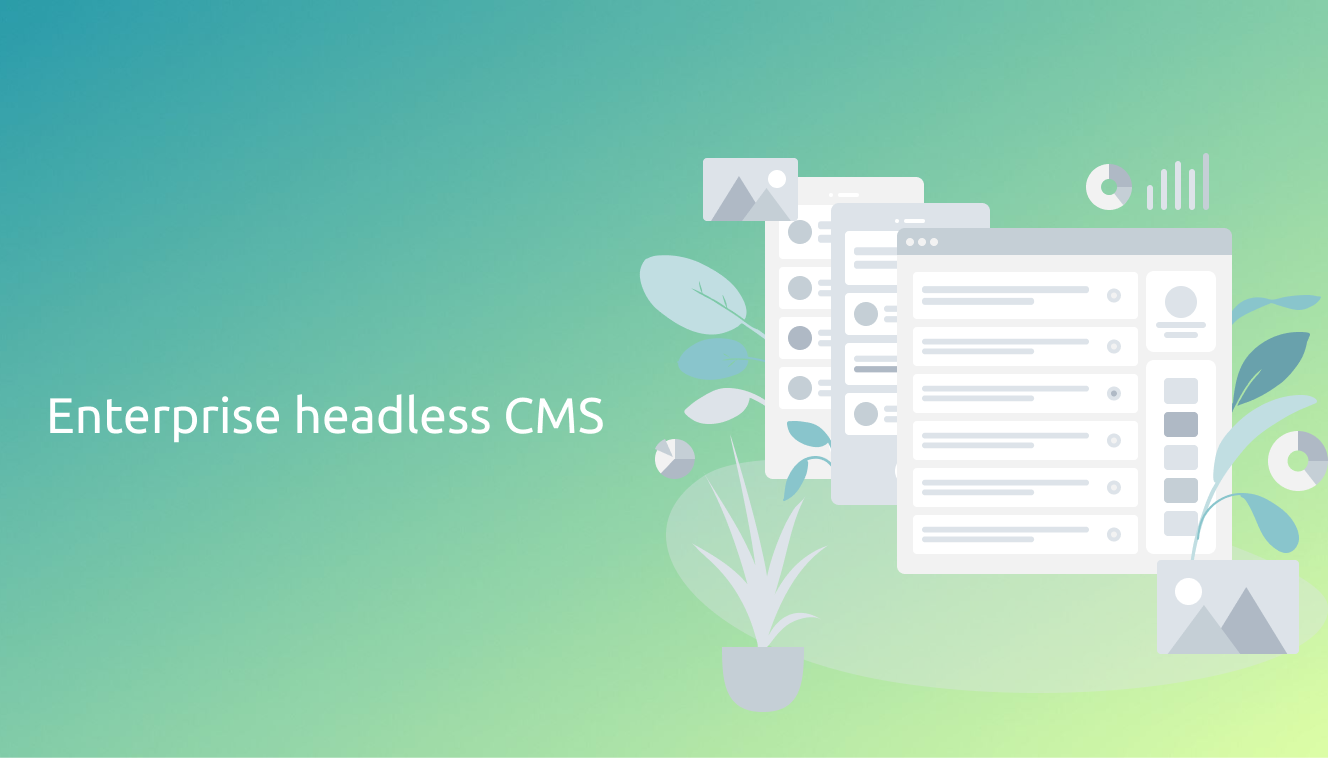
If you’re in the market for a headless CMS for your enterprise - here are some important things to consider and features to look for to make the implementation process as smooth as possible.

We’re a team of passionate developers dedicated to building innovative solutions and sharing our knowledge. From coding best practices to emerging tech trends, we explore it all. Our goal is to simplify complex concepts and empower developers of all levels. Join us as we learn, build, and grow together!
.png)
In an enterprise environment, you often have a variety of existing software solutions and they already store a lot of data, which could be very useful if shared across the organization. Unfortunately - that data is often locked, siloed in the applications where it's stored because of a lack of support for standards-based access. Proprietary data formats, built-in databases and similar solutions make it difficult to reuse content that has been collected and stored by your company for years.
When implementing a headless CMS in your organization - one of your key goals should be, what we call content freedom - any piece of content you produce and store in the system should be widely accessible across the enterprise. Here are some features you should look for to make this happen:
Headless Content Management Systems usually pride themselves on being ready for “omnichannel” content delivery. In reality, this means that headless CMS systems are focusing on storing clean data, which is not tied to a specific channel (e.g. website) and does not include any details as to how this data will be eventually displayed (for example - what colors will be used, or what font size). Thanks to that - the content stored in a headless CMS is easier to reuse in different scenarios.
What about existing data and systems? Data migration is one option, but in an enterprise scenario - quite often you won’t be able to simply switch off an existing system as there are many processes already relying on it. In that case - you will have to synchronize the data, or subsets of data, between systems, often using custom “glue” code to provide that synchronization. This is a lengthy process and requires a lot of time and effort to complete. How to avoid this or minimize the extent? Look for a headless CMS system that receives data just as easily as it publishes it.
Flotiq - for example - is open to thousands of data sources. It’s the only headless CMS that integrates with the Microsoft Power Platform and it’s a breeze to feed it with data coming, for example, from Microsoft SharePoint or Excel. With a couple of mouse clicks, you can set up synchronization between systems that requires no development at all.
One of the most painstaking parts of implementing new systems is the necessity of data migrations. If you’re planning to replace an existing system, or systems, with a headless CMS - you need to verify how difficult and time-consuming it will be to perform such an operation. If the source and target systems are not flexible in terms of the structure of content it may take a significant effort to develop a migration tool that will convert between the data formats. The most important features during migration are:
Implementing any new application in an enterprise is usually a lengthy process, involving multiple parties. One of the most important stakeholders in that process is the security officer. If you’re looking for a smooth implementation, here are the important points that the security team will check:
Access control:
Application security:
Hosting security:
Enterprises consider headless CMS to help them automate and optimize the process associated with content management, decrease the time their employees spend on content distribution, enhance team communication and improve content reuse across organizations. Depending on the existing company policies – some CMS systems will fit in better than others, one of the main discriminators being the deployment model – for some organizations, cloud-based SaaS is still a no-go when it comes to storing company data.
As a headless CMS, Flotiq provides solutions dedicated to Enterprise customers. Contact our sales team to start the discussion and learn more about how Flotiq can help you improve content management at your company!
If you feel that you’re not ready for headless solutions and want to stick with your old system try to take a look at our article: